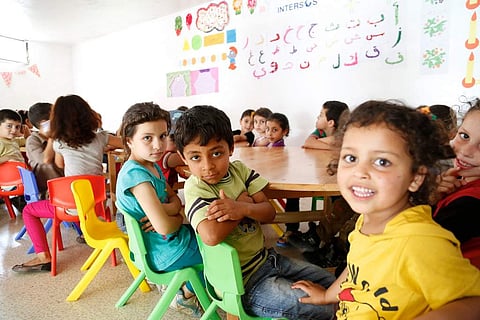Young children more likely to explore choices than choose an immediate reward: Study
According to the findings of a recent study, in comparison to elderly people, young children who are around the age of 4-5 are inclined in exploring more choices than keep an eye for an immediate reward.
"Exploration seems to be a major driving force during early childhood — even outweighing the importance of immediate rewards. We believe it is because young children need to explore to help them understand how the world works," said Vladimir Sloutsky, co-author of the study and professor of psychology at Ohio State University.
Researchers found that when adults and 4 to 5-year-old children played a game where certain choices earned them rewards, both adults and children quickly learned what choices would give them the biggest returns. But while adults then used that knowledge to maximize their prizes, children continued exploring the other options, just to see if their value may have changed.
And despite what adults may think, kids' search for new discoveries is anything but random. Results showed children approached exploration systematically, to make sure they didn't miss anything.Sloutsky conducted the study with Nathaniel Blanco, a postdoctoral researcher in psychology at Ohio State. Their results were published online recently in the journal Developmental Science. The researchers conducted two studies. One study involved 32 4-year-olds and 34 adults.
On a computer screen, participants were shown, four alien creatures. When participants clicked on each creature, they were given a set number of virtual candies. One creature was clearly the best, giving 10 candies, while the others gave 1, 2, and 3 candies, respectively. Those amounts never changed for each creature over the course of the experiment.
The goal was to earn as much candy as possible over 100 trials. (The children could turn their virtual candies into real stickers at the end of the experiment.) As expected, the adults learned quickly which creature gave the most candies and selected that creature 86 per cent of the time. But children selected the highest-reward creature only 43 per cent of the time.
And it wasn't because the children didn't realize which choice would reap them the largest reward. In a memory test after the study, 20 of 22 children correctly identified which creature delivered the most candy."The children were not motivated by achieving the maximum reward to the extent that adults were. Instead, children seemed primarily motivated by the information gained through exploring," Blanco saidBut what was interesting was that the children didn't just click randomly on the creatures, Sloutsky said.
When they didn't click on the option with the highest reward, they were most likely to go through the other choices systematically, to ensure they never went too long without testing each individual choice.In a second study, the game was similar but the value of three of the four choices was visible - only one was hidden. The option that was hidden was randomly determined in each trial, so it changed nearly every time. But the values of all four choices never changed, even when it was the hidden one.
Like in the first experiment, the 37 adults chose the best option on almost every trial, 94 per cent of the time. That was much more than the 36 4- and 5-year-old children, who selected the highest-value option only 40 per cent of the time.
When the hidden option was the highest-value option, adults chose it 84 per cent of the time, but otherwise, they almost never selected it (2 per cent of the time). Children chose the hidden option of about 40 per cent of the time - and it didn't matter if it was the highest value one or not.
"The majority of the children were attracted to the uncertainty of the hidden option. They wanted to explore that choice," Sloutsky said.
However, there were some individual differences in children, he noted. A few children, for example, acted much like adults and nearly always chose the highest-value option. In the second experiment, a few children almost always avoided the hidden option.
These variations may have to do with different levels of cognitive maturation in children, he said. But it appears that all children go through a phase where systematic exploration is one of their main goals."Even though we knew that children like to run around and investigate things, we're now learning that there is a lot of regularity to their behaviour," Sloutsky said.
While Blanco added: "Children's seemingly erratic behaviour at this age appears to be largely moulded by a drive to stockpile information."


